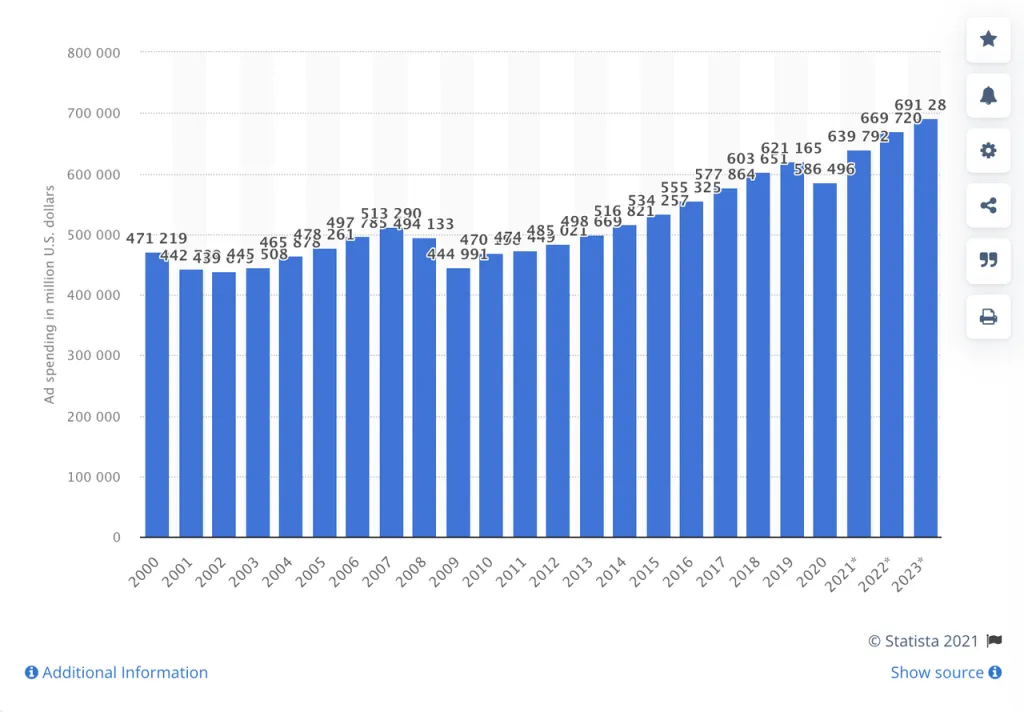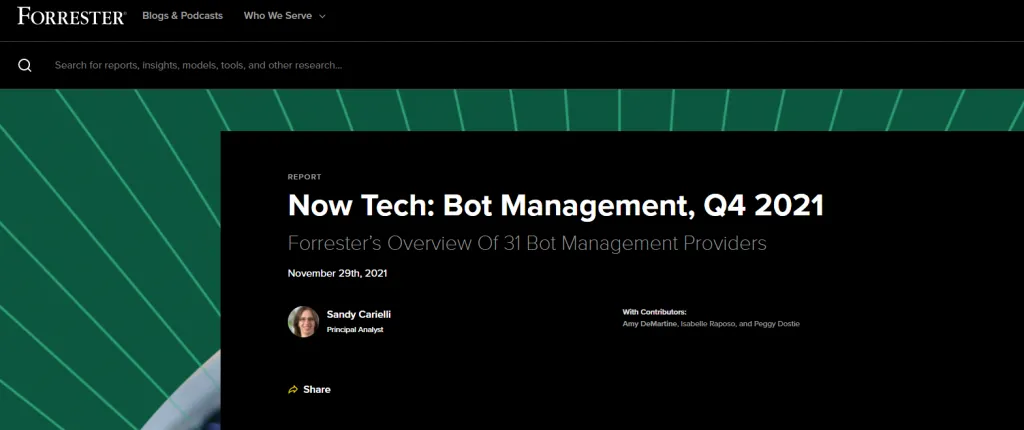How Digital Ad Fraud Kill Your Business?
Ad delivery is obviously the quickest way to drive more traffic to digital businesses. Statista indicates that a study of global advertising expenditures found that ad spending reached $586.5 billion in 2020. Besides, forecast data shows that global ad spending will hit $691 billion by the end of 2023.

Apparently, the increase in ad spending has given fraudsters the opportunity to execute fraud schemes for profit. Data from Wfanet shows that global losses from ad fraud in 2020 were $35 billion, and this figure is estimated to increase over $50 billion a year, by 2025.
Don’t be mistaken for thinking that it doesn’t affect your business. As an advertiser or marketer running digital campaigns, in order to make your returns proportional to your advertising investment, you are required to use ad spy tools like BigSpy to track competitors' ads and follow up new trends on the market, and most importantly, you have always to be concerned about the ad security issue and make sure your ads are fully protected, otherwise, ad fraud will eat away at your budget. A white paper released by AdAge and co-sponsored by anti-fraud company Spider Labs estimates that ad fraud is stealing 20% (which comes to $66 billion) in global online ad spending. That's a massive loss of your ad budget.
What is digital ad fraud and who is responsible?
Digital ad fraud is a scam that online fraudsters sell ad impressions by setting up fake websites for profit. Most ad fraud practice is generated by bots and software designed to perform automated attacks and clicks. Low risk and high profit make digital ad fraud an attractive crime to online fraudsters. Also, it is always run for criminal intent to generate money and is usually performed by large criminal organizations.

How common is digital ad fraud?
Many ad fraud researchers claim that ad fraud is apparently out of control, and takes up a significant portion of total web traffic. A claim written by SmartyAds CEO Ivan Guzenko in a piece for Entrepreneur in 2018, indicates that up to 70% of your marketing budget could be lost to bots.
The Association of National Advertisers and an online fraud detection company White Ops, conducted one of the industry's largest studies, determining that 11% of displays and 23% of video displays were caused by bots and botnets. In another study, mobile analytics firm Apsalar found that globally, 2.57 fraudulent clicks were made for every real click to install.
How digital ad fraud is carried out and main types of ad fraud
Here are a couple of examples of how digital ad fraud is carried out:
- Videos that are automated play but are too infrequent or not even visible on the page.
- Bots are installed on customers' PCs without knowing and trigger ad impressions that genuine users can not see.
- Malicious software that simulates multiple clicks every time a consumer makes a real click.
- Botnet creates fake customer traffic and steals your ad budget away.
Besides, here are some main types of ad fraud marketers are likely to encounter:
- pixel stuffing, stuffing an entire ad into a pixel space and charging the full price.
- malicious bots, bots that impersonate humans and send spam, click on ads and perform some attacks.
- cookie stuffing, placing multiple affiliate cookies into a user's browser for a commission.
- ad stacking, overlaying multiple ads at once and charging for fraudulent impressions.
- domain spoofing, forging website names or email domains to spoof users.
- location fraud, falsifying location data with the "users" location to trick ad vendors.
Some warning signs of digital ad fraud
Strange traffic sources
The good news is you are running an effective digital campaign for your business, while the bad news is they might come from outdated browsers or unpopular devices. Traffic from unknown traffic sources can be indicative of fraud. Also, watch out for repeated visits from the same IP address and random countries/regions outside the target parameters.
High bounce rates with lower conversion
A high bounce rate means many visitors click and land on your site but leave very soon, and unusual bounce rates cause concern and further investigation.
When combined with higher impressions, higher bounce rates and lower conversions are suspicious.
Abnormally high Click-Through Rates(CTRs)
High CTR is typically a good thing, but unrealistic and abnormal click-through rates (CTRs) with warning signs such as no performance, high bounce rates and low session durations need to be investigated.
Low viewability
Visibility determines whether your ad has a chance of being seen by real people, and your visibility should be around 40-60%. If it is low, it means that your traffic, visits and clicks are likely to come from fraudulent sources because real people cannot see the ads.
Keep an eye on these warning signs when running ad campaigns, then you will have a good chance of safeguarding your campaigns.
How to prevent digital ad fraud?
Keep an eye on your campaign data
Keep an eye on the changes in traffic that don't match the website's performance and other metrics. For example, sudden spikes in traffic for no apparent reason or unusually high click-through rates unrelated to your offer. Also, pay close attention to the different geographic locations. Suppose traffic is targeted at U.S. customers but comes from other countries. In that case, this is likely to indicate fraud, especially if conversions or other essential metrics are nowhere or almost nowhere to be found.
Don't advertise on low-quality sites
Try to avoid advertising on some low-quality sites. On the one hand, low-quality sites are attractive for attackers because they can easily set some viruses and traps. On the other hand, the data of the website might be fake, and you need to use multiple tools to analyze whether the various data on this site are actual. Some sites may not carry out some fraudulent activities in your first deal, but they will steal your credentials to implement further fraudulent activities. Please make sure the partners you work with have a good reputation in their field.
Deploy GeeTest CAPTCHA to stop bot attacks and improve your ROI
CAPTCHA is one of the effective ways to stop bot threats when running digital ad campaigns. By analyzing behaviors of real visitors, GeeTest CAPTCHA can detect fraud and prevent it in real-time with zero user friction, save your ad cost, and improve your ROI eventually.

Use anti-fraud tools for your ad campaigns
It's always recommended outsourcing this extremely complex and evolving problem to professionals who can do it best, and most importantly, quickly and effortlessly. Try to find some bot management and online fraud prevention vendors to protect your business from fraudsters. A white paper regarding an overview of bot management vendors published by Forresters recently covers some brilliant and excellent bot mitigation solution providers. GeeTest is recognized as Forrester's selected bot management vendor for its superior mitigation capabilities and relatively high market share.

Summary
Ad fraud is a major issue affecting advertisers across all industries, and it doesn't seem to be going away anytime soon. Therefore, you cannot ignore the problem. Besides, the problem is not whether you are affected by ad fraud. Instead, it's about how much you are affected by ad fraud and what cost you pay for fraud, and that's why investing in ad fraud prevention is so important.













